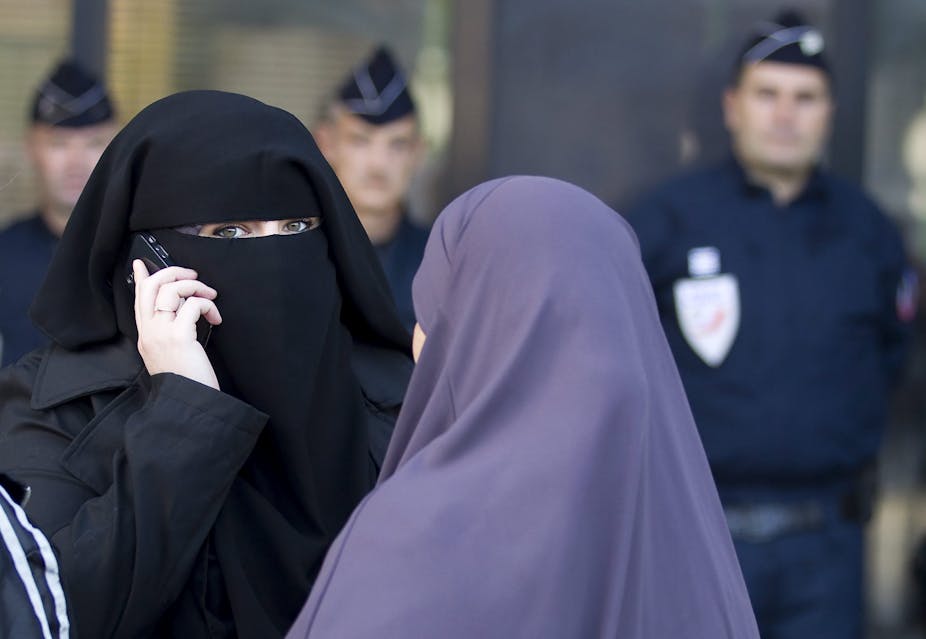The rights and wrongs of women wearing niqabs to give evidence have been the subject of an English court decision and much social and media debate recently. Over the past few years, the issue has also come up in Western Australia, New Zealand and Canada.
In all cases, the courts have eventually ordered the witness to remove her niqab for at least a part of the court proceeding. The wearing of niqabs usually raises arguments in the media about religious freedom, or alternatively what are seen as alien faiths. Should the wearer be free to wear what her religious beliefs require? Should she, rather, be helped to escape from oppressive patriarchal religion? Should she be told not to be “foreign” or “un-British”, and to toe the line and bare her face like everyone else?
The wearing of niqabs is obviously controversial, but the controversies have been about the wrong questions. Issues about personal choice, religious freedoms and oppressive practices are worthy subjects for debate, but the real question of whether it matters if someone can wear a niqab when giving evidence actually challenges the basis of the court system.
The so-far unchallenged assumption is that the judge or jury must be able to see a face to assess “truthfulness”. This is the rule about “demeanour evidence”. It is the rule that the judge or jury in a courtroom need to watch a person giving evidence, in order to be able to decide whether or not the person is telling the truth.
This rule means that whether a person is charged with a crime or is litigating an action, everyone giving evidence must be equally available to have their evidence tested by not only cross-examination of their words, but the assessment of their truthfulness on the basis of their presentation.
The cases in WA, NZ, Canada, and now the UK have all involved a woman who wished to wear her niqab as part of a religious practice which required that men who were unknown and unrelated to her should not see her face. The conclusion in each of the cases that the woman had to remove her niqab was reached on the grounds that a fair trial - or fair hearing - cannot be had if a witness cannot be observed while giving their evidence.
Australia’s legal system demands that witnesses appear in person, in the courtroom, because of this belief. Special arrangements for children and for televised attendance were widely debated before being accepted, and the admission of hearsay evidence is strictly regulated. These are all seen as “special cases”, which do not challenge the central principle of adversarial justice.
The problem is that people’s ability to judge truthfulness by looking at a witness giving evidence in a courtroom is no better than chance. The scientific research shows conclusively that humans are poor lie detectors and that there are no reliable indicators of deception, despite any number of films and television crime series claiming precisely the opposite.
One of the reasons we are so unwilling to accept that there are no reliable and universal indicators of deception is that it does not appear to square with our personal experience. We all think we know when our partner or our children are telling a lie by the way they shift their feet, roll their eyes, or tug their hair. But our experience with these familiar cases cannot be generalised. In these situations we know the subject intimately and have detailed knowledge of their behaviour and habits, not to mention their daily routine and other contextual information crucial to our judgement.

This is a vastly different situation to the testing of evidence in a courtroom, where the judge or jury is seeking to verify the claims of a stranger: someone whose normal behaviours and habits are unfamiliar. Additionally, a courtroom is an alien environment for almost everyone, and particularly for a person giving evidence. They will not be acting “normally”, even if the judge or jury knew what that was.
When judges rule that a witness must remove her customary face-covering to give evidence, they are relying on two assumptions that have remained unquestioned by our legal system. Firstly, that it will be possible to observe cues to deception or credibility in a witness’s face. Secondly, that a witness giving evidence in a courtroom will present themselves according to a set of behavioural norms, against which a judge or jury can evaluate their credibility.
However, there is no scientific evidence to support the first assumption. Also, the second assumption relies on people from our culturally and linguistically diverse community all behaving according to the same set of rules when faced with the highly unusual and unfamiliar environment of the courtroom.
There is also a third assumption to be added: that this particular witness will behave “normally” and remain unaffected when asked to present her evidence only partly clothed.
Can we really continue to place our confidence in a system that is based on practices that ignore scientific evidence and assume behavioural homogeneity across the spectrum of idiosyncratic individuals that might be witnesses?

